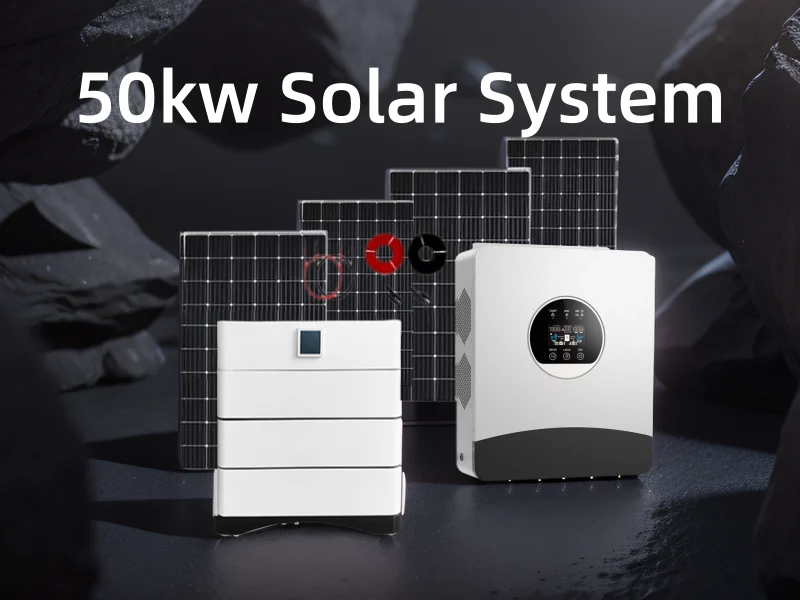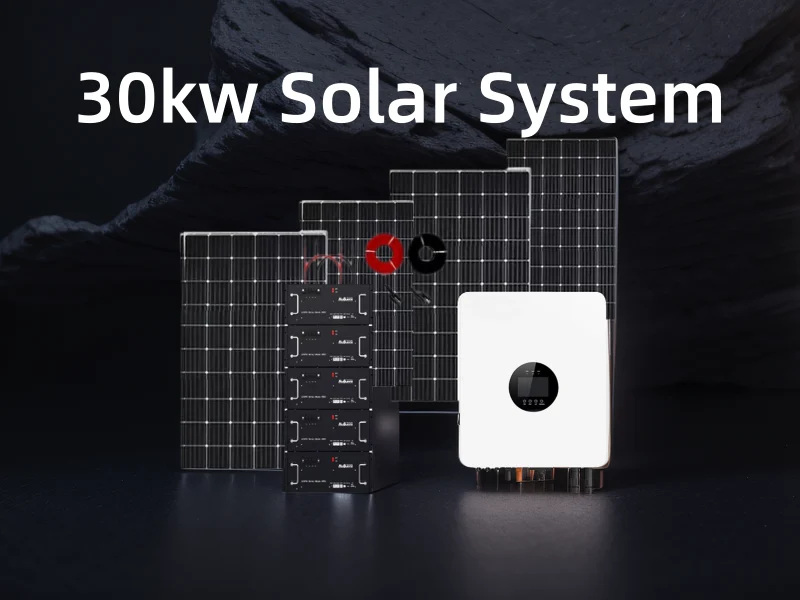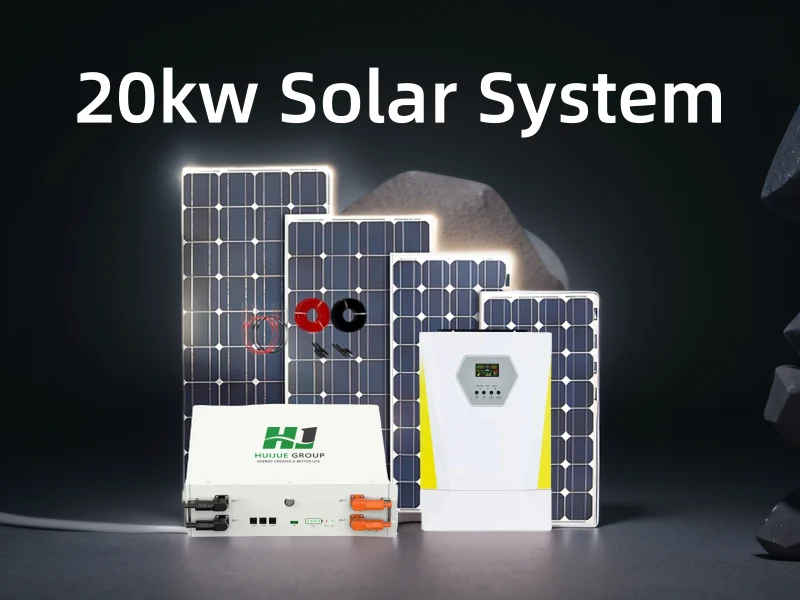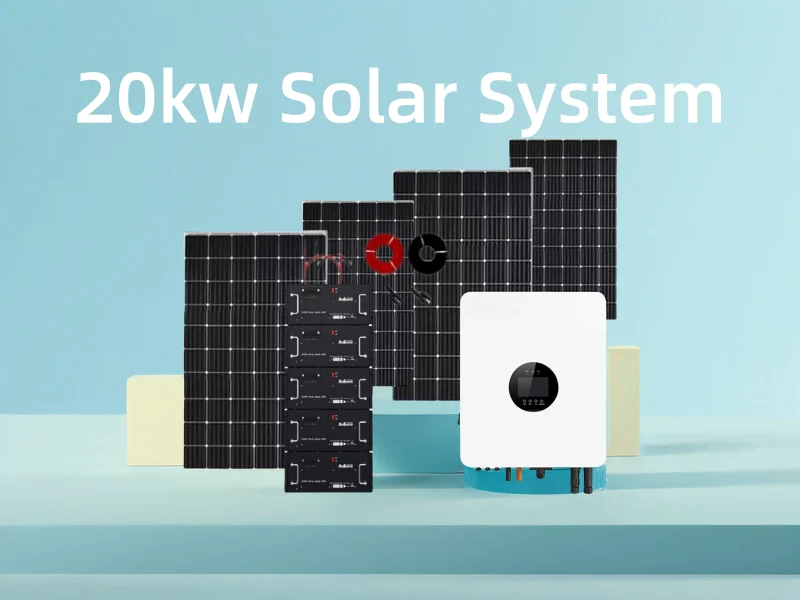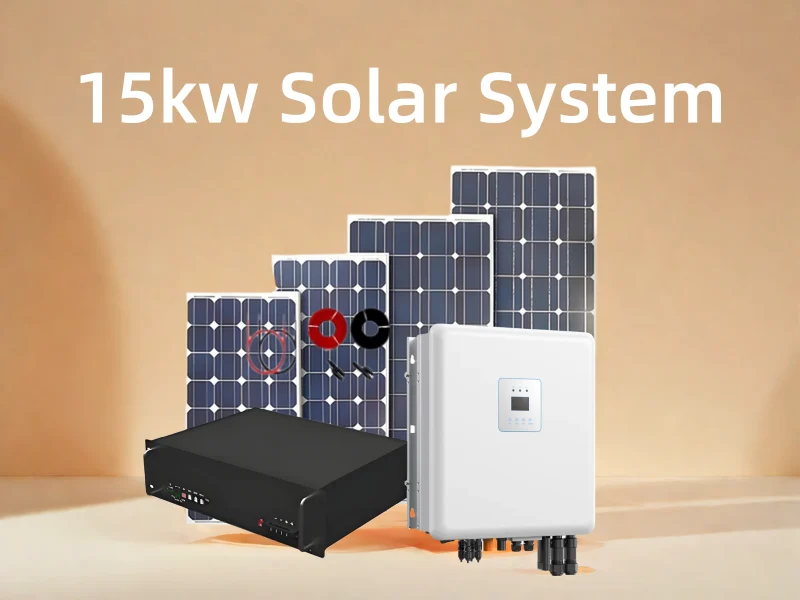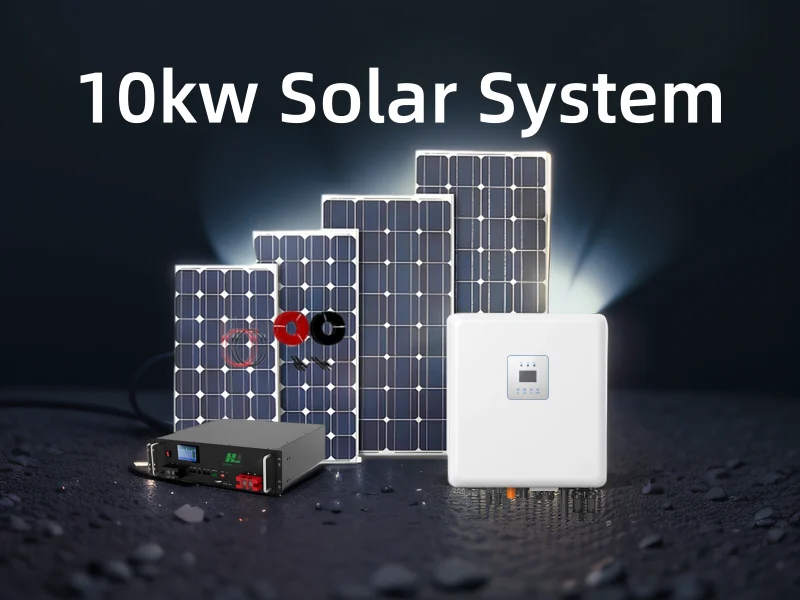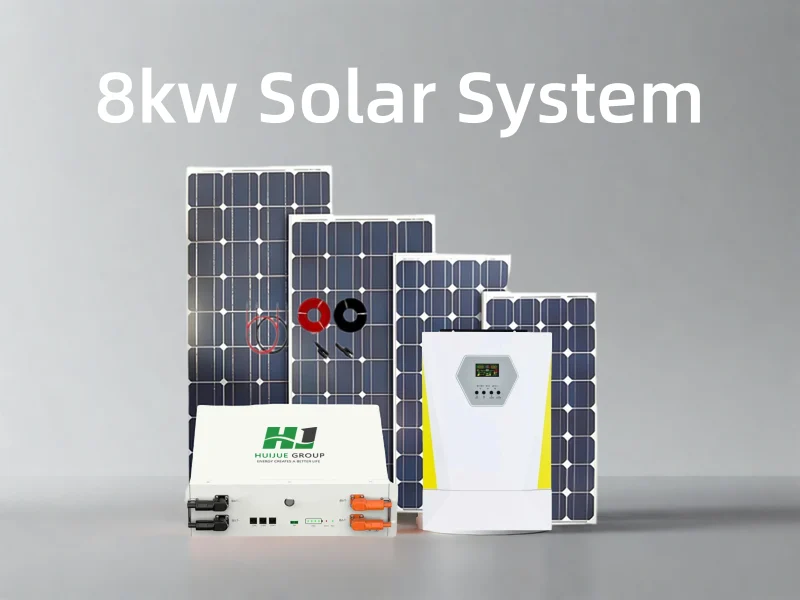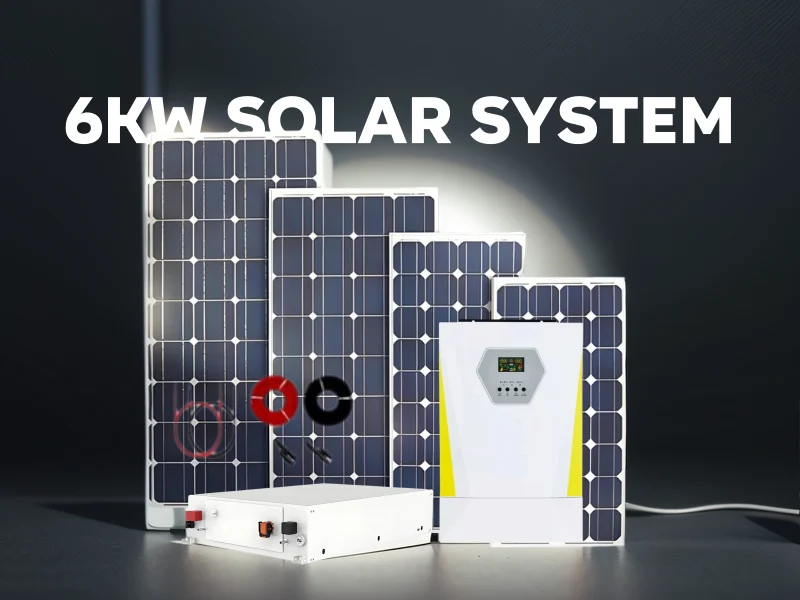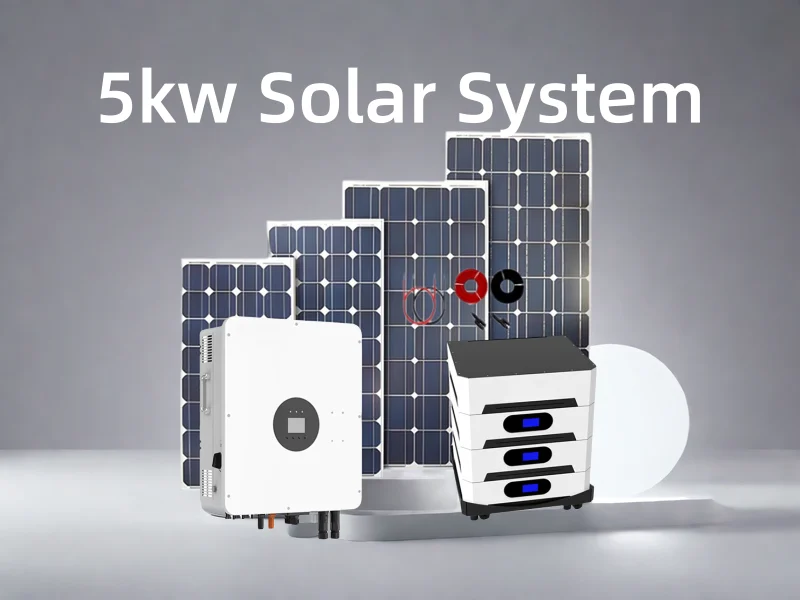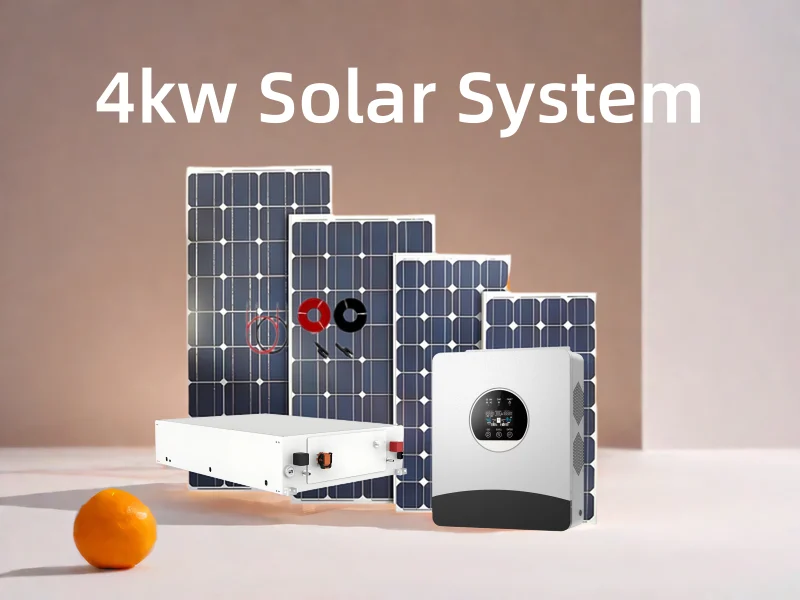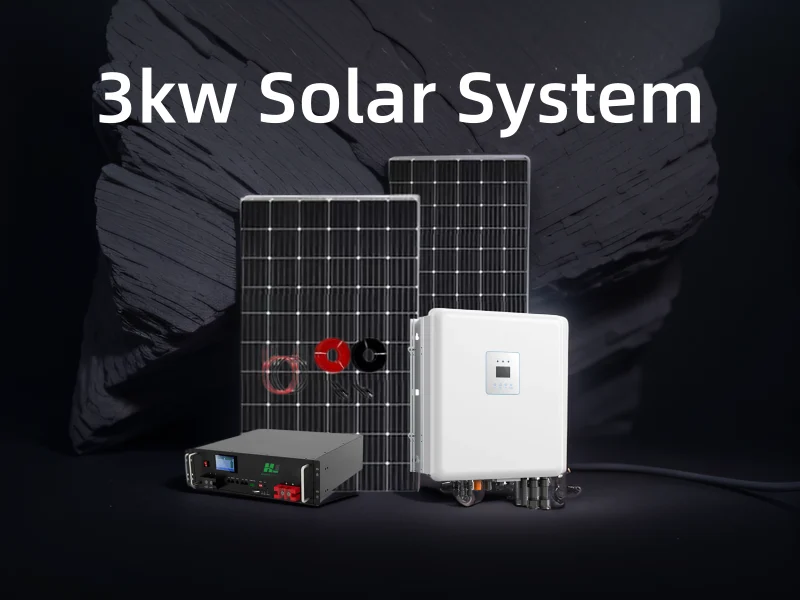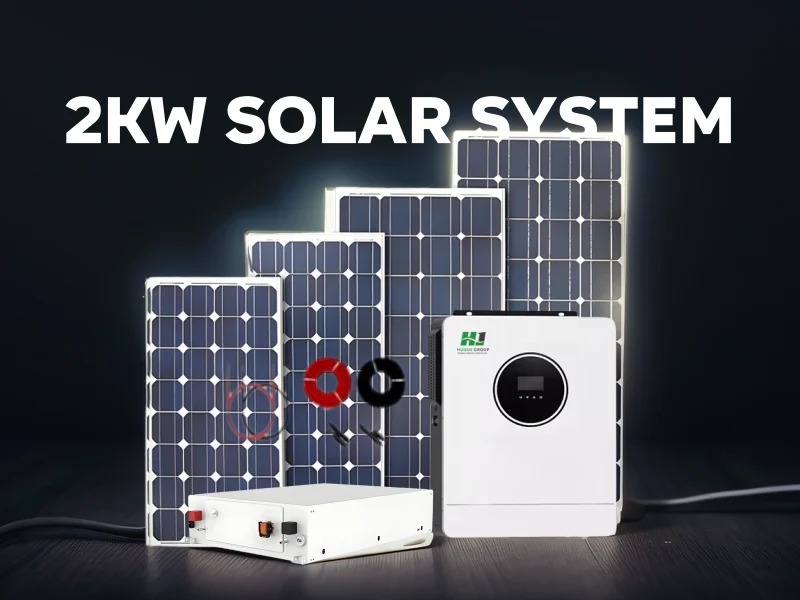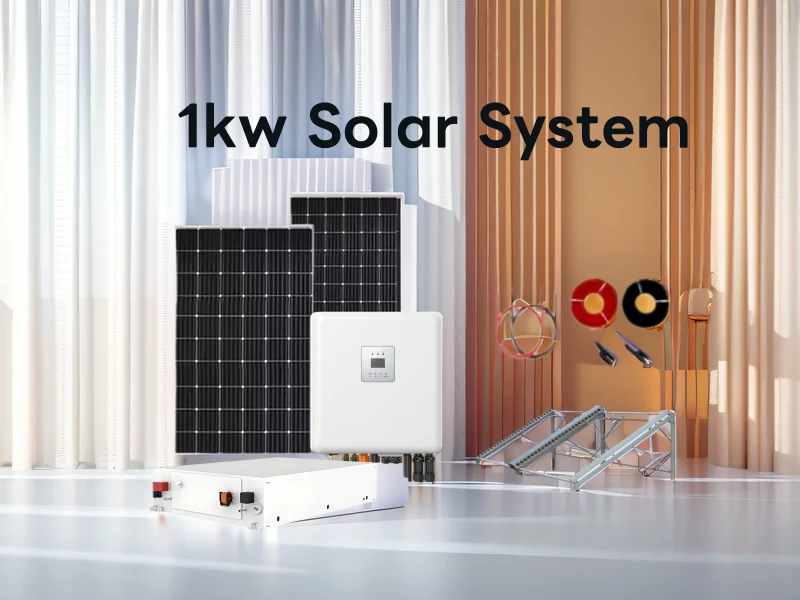How much does a 10kW solar system cost in off-grid rural areas in Pakistan?
For rural Pakistan's off-grid or unstable power populations, a 10kW solar system is the key to an enhanced lifestyle. Providing the power requirements of several homes, small community centers, or agricultural operations, this system has the ability to aid rural growth, as well as overall living standards . This full guide goes through the costs of 10kW off-grid solar systems for rural Pakistan today, how they're installed, and real-life applications.
Current Pricing Structure for Off-Grid 10kW Systems (October 2024)
Usually, the cost of a 10kW off-grid solar system in rural Pakistan is between 2.5 million and 3.8 million Pakistani rupees or US$8,900 to $13,600. Because off-grid systems require enormous batteries to store energy and specialized hardware to enable independent operation, they are much more expensive than grid-connected systems.
| Component | Cost Range (PKR) | Rural-Specific Considerations |
| Solar Panels (10kW) | 850,000 - 1,150,000 | Reinforced panels recommended for harsh rural conditions |
| off-Grid Inverters | 400,000 - 550,000 | Must be robust and capable of operating without grid support |
| Battery Bank | 800,000 - 1,400,000 | Larger capacity (20-30kWh) required for multi-day autonomy |
| Charge Controllers | 120,000 - 180,000 | MPPT controllers with remote monitoring capability |
| Mounting Structure | 150,000 - 200,000 | Must withstand local environmental conditions |
| Balance of System | 200,000 - 250,000 | Heavier cables and enhanced protection systems |
| Installation & Labor | 250,000 - 350,000 | Higher costs due to remote location and logistics |
| Transportation | 80,000 - 200,000 | Varies significantly by the accessibility of the location |
| System Enclosure | 70,000 - 150,000 | Weather-proof housing for electronics and batteries |
Real Examples from Rural Pakistan
Example 1: Community Microgrid in Balochistan
The destitute village of Balochistan has solar microgrid power. Now, as it becomes transformed into a remote village in Pakistan, 10.5 kW micro-grids supply electricity to 15 houses, one community center, and a water; small pumping station, costing about 3.2 million Pakistani rupees. The local community raised it and is sponsored by NGOs. It's not easy physically relocating the machinery, but they also guide the natives on how to maintain the system now it's functional.
Example 2. Agricultural cooperative of Sindh.
A 10 kW solar power system has already been installed in Sindh, which has been put into use to benefit the agricultural sector. It has provided power to a common agri-processing building and 8 houses. The system is electric for all agricultural productions having an investment of total Rs 2.95 million funded by the repayment of the loan from the cooperative. But the place is so dusty, and loads of electricity also vary season-wise; hence it requires a lot of special care in dust control and handling electricity loads.
Example 3: Rearing Enterprise Center, Khyber Pakhtunkhwa
In its rural enterprise center, Khyber Pakhtunkhwa has a solar system installed. The 10.2-kW system provides energy to simplified carpentry workshops, community cold storage, as well as technology centers at an expense of about PKR 3.45 million. The system is insulated on batteries for the harsh winters. However, maintenance becomes somewhat tricky during winter due to heavy snow and low visibility.
Example 4: Punjab-centered Education Complex
This institution uses a 10-kilowatt solar setup in Punjab. Not only does it light up the educational environment, but it also lights up the dormitories of teachers and the computer rooms in the institutions. The total cost of the whole system has been around PKR 3.1 million funded by the provincial education department. All the panels are installed on rooftops, mixed with an energy management system that gives priority to the electric energy required by the school. Though there was less electricity consumption in holiday times, safety measures must also be ensured.
Step-by-Step Implementation Process for Rural Off-Grid Systems
1. Community assessment
Understanding the electricity needs of the community means assessing how much electricity the community actually requires, how much it presently consumes, and how to direct the excess elsewhere. It also means monitoring seasonal deviations from electricity consumption and planning to supply electricity to each household. Looking into maintenance: see whether there would be someone around to look after the periodic maintenance of these machines.
2. Site and resource assessment
Solar resource assessment: find out how much sun this place gets and talk to everyone in the surrounding area to best decide where to install the solar panels.
Site condition assessment: check how the soil conditions of the ground will be strong enough for the mounting equipment.
Plan transportation routes: establish transport for the equipment to the installation site in advance to avoid any hurry when the time comes.
Consider clean water sources: find out if clean and appropriate sources of water are nearby to facilitate the cleaning of solar panels.
3. Design of rural disaster resistance system
Compute battery capacity: the design depends on battery capacity, which is determined by the duration of independent operation.
Design against extreme weather: the design is to withstand extreme local weather conditions and never to let strong winds or heavy rain harm equipment.
Expansion in the future: some room should remain in design so as to expand easily in the future.
Barrier-free housing: designing a secure "little house" for batteries and electronic devices to prevent any accidents.
Load management system to be planned: how the electricity will be distributed to serve the electricity needs of the community should be planned.
4. Community participation and governance
Form a community energy committee: Gather different individuals from the community to form a committee for energy management.
Establish a transparent system of charges: The charging system has to be open and known to all.
Set up a dispute resolution mechanism: There is a fair mode to settle any dispute.
Maintenance fund plan: Plan on how to raise and handle the maintenance funds.
Train the operators: A few locals should be identified and trained to operate and maintain the equipment.
5. Selection of equipment for rural settings
Choose durable components: Choosing equipment hardened and usable in a remote area.
Choose the appropriate battery: A battery that affords deep discharge and long life.
Use a simple interface: The inverter should be user-friendly, allowing for remote diagnostics.
Choose protective functions: Protect the battery against problems using the charging controller's protective functions.
Study wind conditions: Choose an appropriate installation system depending on local wind conditions.
6. Logistics planning
Prepare the transport plan: Plan the transport beforehand.
Minimize installation time: Install during good weather, as rain and snow will delay construction times.
Coordinate local staff: Hire a few locals to help with the installation; they know the area's terrain.
Plan accommodation: Arrange accommodation for the installation team.
Prepare for emergency circumstances: When the weather is bad, a contingency plan should be prepared.
Safe equipment storage: The equipment should be stored in a safe location during installation.
7. Community Involvement in Installation
Local Staff Training: Train 2-3 numbers of local technical personnel from the community to assist in the installation process.
Ground Support Installation: Install the ground foundation, bracket, etc.
Solar Panels Installation: Next, the solar panels and securing of the purlin onto sheets becomes important.
Battery on Off-Grid Installation: The installation of off-grid batteries in sheltered boxes will be done.
Distribution Network Installation: For the distribution network installation, make sure diverse safe practices are followed.
Household Connections: Connect every house to the electricity and install load limiters.
Committee: An elected committee, with members from the community representing, will operate the CSP system together.
8. Training and Capacity Building
Testing Operators: Inform 2-3 local people in managing and maintaining a CSP system.
Campaign: Engage the community for their own education regarding the benefits and limitations of the system.
Training the Energy Committee: Train the energy committee on ownership and management of the system.
Operation Manual Preparation: Make an Operation Manual in the local language for easy reference.
Workshops: Workshops should be conducted to educate everyone about electric savings and electricity usage.
Communication Protocol With: In conclusion, touch base with the technical support team to resolve any issues timely.
9. Monitoring and maintenance framework
Remote monitoring: Have a remote monitoring system in place if local weather permits, to allow control functions.
Reporting: Set out a list of deliverables, constituting what operators are expected to do in reporting system operations.
Preventive visits: Create a schedule for quarterly preventive visits to nip possible glitches in the bud.
Emergency response: Ensure all hands are on deck if a system goes down.
Inventory: Plan to show investments in stock under maintenance. This will not be without spare parts since they are key.
Annual Evaluation Plan: Every year examination and feedback from the community.
Industry Context for Rural Off-Grid Solar in Pakistan
Current Market Landscape
Pakistan's rural off-grid solar market has experienced a drastic change in the past decade, mainly due to the following factors:
Market demand growth: Approximately 30%-35% of Pakistan's rural areas have unstable grid connectivity, opening a large window of opportunity for the solar market.
Technological innovation: The cost of batteries has dropped by about 25% since 2020, lowering the cost of solar systems.
Industry development: The Growth of professional firms that deal with rural installations has promoted industry maturity.
Financing technology: Emerging financing models such as pay-as-you-go and microcredit have been implemented, lowering the cost of installation.
Policy incentives: The Alternative Energy Development Board has launched an off-grid solution paradigm, with policy guarantees for industry growth.
Major rural implementation issues
Logistics problems: It will take an additional 10%-15% of the cost to bring equipment into rural areas.
Technical support deficiency: Rural regions do not have professional technicians, and it is difficult to repair faulty equipment.
Quality issues: There are many low-quality equipment on the market with fluctuating quality.
Social issues: There needs to be a consensus in society for all to have equal access to electricity.
Financial pressure: Money to cover sustainable charging and upkeep has to be made available in order to keep the system going in the long run.
Extreme climate: Pakistan has a complex and volatile climate, and the technology has to withstand many extreme climates.
Funding and finance terms
To offset the large up-front expense, many funding channels have emerged:
Government support: The alternative Energy Development Fund provides preferential interest loans to reduce the burden of users.
Provincial grants: Provincial governments provide grants to major communities to promote rural electrification.
International assistance: International donors such as the World Bank, Asian Development Bank ,and USAID provide project assistance.
NGO support: Organizations such as AKRSP and NRSP provide partial financial support to enable the installation of solar systems in communities.
Microfinance: Small-scale community solar energy project financing to tackle financial challenges.
Sustainability Considerations
For long-term viability, rural off-grid systems require:
- Financial sustainability:
Cost structure: including the operating cost of equipment, maintenance, and battery replacement to maintain long-term operation.
Charging mechanism: introduce a fair charging system based on the economic status of the rural area so that it can be afforded by everyone.
Emergency fund: create a special emergency repair fund to avoid equipment downtime.
- Technical sustainability:
Technical training: provide local technicians with training so that they are able to repair the equipment by themselves.
Spare parts supply: establish a steady supply chain of accessories to ensure timely repairs.
Regular maintenance: develop a program for regular inspection and maintenance to prevent failure.
- Social sustainability:
Fair use: develop policies to enable every family to use electricity in a fair way.
Transparent management: develop a transparent management system to enable everyone to know how to use money and how to distribute electricity.
Conflict resolution: possess a process for resolving any conflict that might arise and restore harmony in a prompt manner.
- Environmental sustainability:
Battery recycling: Possess a channel for recycling batteries to reduce pollution.
Waste management: dispose of the discarded equipment parts in the right way to avoid damaging the environment.
Environment-friendly installation: Consider environmental factors while installing to keep the land and ecology impact at a minimum.
System Design Considerations by Rural Application
Remote Village Electrification
- Priority Loads: Domestic lighting, cell phone charging,Community TV
- Design Focus: Equitable distribution, simple household connection
- Battery Sizing: 25-30kWh to cover 2-3 days of basic needs
- Distribution: Household connection limits with circuit breakers
- Key Success Factor: Community management organization
Agricultural Applications
- Priority Loads: Pumping irrigation, crop processing, cold storage
- Design Focus: Encouragement of productive use, seasonal load control
- Battery Sizing: 20-25kWh with load scheduling for energy-intensive uses
- Distribution: Central facilities with shared access
Key Success Factor: Timing of the agriculture cycle
Small Rural Enterprises
Priority Loads: Machinery in workshops, refrigeration, communications
Design Focus: Ability to generate income, business-critical reliability
Battery Sizing: 25-30kWh with high-priority circuits for business equipment
Distribution: Institution-first policy with household connection as secondary
Key Success Factor: Hand-in-hand business development with energy access
Community Facilities
Priority Loads: Schools, health clinics, public community facilities
Design Focus: Public service availability, enriching the community
Battery Sizing: 30-35kWh for maintenance of mission-critical services
Distribution: Institutional connections with controlled public usage
Key Success Factor: Integration with institutional budgets and planning
Maintenance Framework for Rural Areas
Effective maintenance in remote locations requires specialized approaches:
1. Maintenance Structure Classified by Frequency :
- Daily - Basic supervision by local operator.
- Monthly - Preventive care from trained community technicians.
- Quarterly - Technical inspection by visiting professional.
- Annual-Total system evaluation.
2. Practical Training Methods:
- Hands-on training during installation.
- Pictorial manuals in mother tongues.
- Video stock on troubleshooting 0f basic.
- Remote-supportable on a mobile phone if possible.
3. Local Inventory Needs:
- Fundamental tools and testing equipment.
- General fuses and circuit breakers.
- Distilled water for flooded batteries if any.
- Cable and connection supplies.
- Basic safety equipment.
4.Documentation Systems:
- Simplified daily log books.
- System usage tracking for optimization.
- Incident reporting system.
- Collecting Expensesand Revenue.
Economic Impact Analysis
Beyond direct energy provision, 10kW off-grid systems deliver substantial economic benefits:
1.Home Economic Benefit:
Average monthly energy savings per household: PKR 1,500-2,500
Increased productive time: 4-5 hours per day
Additional income sources: Mobile charging service, refrigeration, etc.
2.Economic Community Development:
Supports new micro-enterprises: 3-5 new ventures typically emerge
Improves education attainment with evening study opportunity
Reduces out-migration by 15-20% in some communities
3.Farm Productivity:
Supports small-scale irrigation: 20-30% yield increase reported
Supports post-harvest processing: Reduces losses by 15-25%
Supports access to market information: Improves prices by 10-15%
4.Long-term Financial Analysis:
System lifespan: 20+ years (panels), 7-10 years (batteries)
Battery replacement: High cost at 7-10 year intervals (PKR 800,000-1,200,000)
Monthly operating costs: PKR 15,000-25,000 including maintenance fund
Levelized cost of electricity: PKR 25-35 per kWh (compared to PKR 50-70 for diesel generation)
Conclusion
A 10kW off-grid solar system is a life-changing investment for Pakistani rural communities. Not only does it provide safe electricity, but it also drives community development in many aspects. Such a system is, however, expensive, costing between 2.5 million and 3.8 million Pakistani rupees. Although expensive upfront, it can save people money on energy bills, create new economic opportunities, and improve the quality of life, thus a value for money.
It requires an enormous amount of technical design work and participation from the people to operate such a system. Such a system must be immune to the complex rural situation. At the same time, there must be a rational management means to ensure that each one has equal access to electricity and that the system has stable and reliable operation in the long run. If properly designed and executed, this system can be a cornerstone of rural development and fill the gap of long-term rural power shortages.
Pakistan remains to face the challenge of electricity connectivity in the rural sector, and 10kW off-grid solar systems are a viable and fast approach to supplement big-scale infrastructure development. For communities intending to deploy solar systems, choosing quality components, receiving comprehensive training, and establishing sustainable management systems are vital in ensuring long-term reliability and maximum benefits to the system.


